| |
|
Friday, May 9 Israel at 60 talk by Eyal Dagan

Saturday, May 17 Tifereth Israel Synagogue—Dizengoff Night

Sunday, May 18 Community Israel Independence CelebrationWednesday, May 28 JFS~Ellen Saks lecture on mental illness

Tuesday, June 3 Guardians Golf & Tennis Tournament

Friday-Saturday, June 6-7 JFS~Judaism on the Wild Side


LETTER FROM JERUSALEM
Independence Week brings its tensions
By Ira Sharkansky
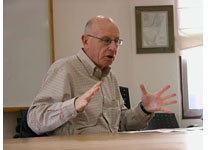 JERUSALEM—What's on our agenda this week? JERUSALEM—What's on our agenda this week?
• Israel's 60th anniversary.
• Intelligence officials are saying that various Palestinian groups are planning a major incidence of violence to spoil the celebration.
• George W. Bush is scheduled to come. We'll have to stay off the roads.
• Condoleezza Rice is already here, demanding that we be nicer to the Palestinians. Palestinians are seeking international help for their insistence that Israel recognize the pre-1967 borders as the starting point of any decisions about borders between the two countries. They are also saying that Israel does not allow the Palestinians to acquire enough weapons in order to show that they can govern themselves; and that Israel is wrong in coming into their cities in order to seize people it suspects of wrongdoing.
 • Hamas and Israel are dealing through Egypt with respect to a cease fire in Gaza. There remain considerable differences between the positions. It is not clear if the Hamas offer is a "take it or leave it" opportunity, or what will be the demands of Israel and the flexibility of Israel or Hamas. • Hamas and Israel are dealing through Egypt with respect to a cease fire in Gaza. There remain considerable differences between the positions. It is not clear if the Hamas offer is a "take it or leave it" opportunity, or what will be the demands of Israel and the flexibility of Israel or Hamas.
• We saw an American television item on the Israeli Air Force, inserted into a weekly Israeli program of news from the world. This item raised once again the issue of Iranian nuclear program, it's threat against Israel, and what all those pilots are training for.
• The police are investigating Prime Minister Ehud Olmert, apparently for violating criminal statutes. There is a block on information, but "reputable sources" are telling journalists that it involves large sums and bribery from the period before he was prime minister. Speculation is that this investigation, something like the fifth in recent years, will be the straw that breaks the camel's back. Opponents are calling for Olmert's indictment, his resignation, and an election.
Not a typical week, but not all that unusual in the combined tensions.
An American asks me to be sympathetic about a horse killed before a national television audience at the Kentucky Derby.
Olmert's been in trouble before. Indeed, he has not been out of trouble for some years now. He is well known for playing very close the edge of the rules, but managing to pass through one police inquiry after another with little more than nasty comments from political opponents. This investigation may be more serious. On the other hand, some of the demands for his resignation come right-of-center parties opposed to the whole process of conversing with the Palestinians. Left-of-center moralists support the peace process, but are beating up on the prime minister in the hope of getting more seats out of an election.
The Palestinians will continue to bleat, and demand that others solve their problems. The continued rain of missiles on Sderot and other border towns does not stand them in good stead with the world, despite the difference in who is ruling Gaza and who is talking peace with the Israelis. The peace talkers themselves are not all that attractive to the world, insofar as they show time and again their inability or unwillingness to work against those planning violence against Israel, or keeping them in jail once they have put some of them there. It often appears that short term stays in Palestinian jails (before there is an "escape" or a release for "lack of evidence") are designed more to protect the violent from the Israelis than to protect the Israelis from the violence.
The President and his Secretary of State will add some of their diminishing weight to the peace process. Insofar as the President is coming to celebrate Israel's 60 years of Independence, however, prominent Palestinians say they will not meet with him. For them, it should be a celebration of their national disaster.
I suspect that we will get through this week.
It's too early to say what the following week will offer.
For those more concerned about the horse, I participate in your sorrow.

A HERALD IN ZION
Orphaned art looking for owners
By Dorothea Shefer-Vanson
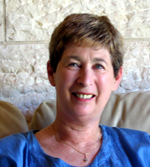 JERUSALEM--Two sister-exhibitions are currently on display at the Israel Museum. The first is a selection of paintings which have been in the possession of the museum and its predecessor, the Bezalel collection, since the end of the Second World War. The paintings, put together for the first time under the title ‘Orphaned Art,’ were found by the Allies in Nazi homes and collection centres throughout Europe. For obvious reasons, the provenance of most of the artworks was not clear, and in many cases their owners could not be traced. The second exhibition, ‘Looking for Owners,’ has been put together and sponsored by the French government. It contains 53 paintings, many of them by renowned artists, which originally belonged to French Jews. JERUSALEM--Two sister-exhibitions are currently on display at the Israel Museum. The first is a selection of paintings which have been in the possession of the museum and its predecessor, the Bezalel collection, since the end of the Second World War. The paintings, put together for the first time under the title ‘Orphaned Art,’ were found by the Allies in Nazi homes and collection centres throughout Europe. For obvious reasons, the provenance of most of the artworks was not clear, and in many cases their owners could not be traced. The second exhibition, ‘Looking for Owners,’ has been put together and sponsored by the French government. It contains 53 paintings, many of them by renowned artists, which originally belonged to French Jews.
The systematic looting of thousands of art works throughout Europe, both from Jews and from national collections in countries conquered by the Nazis, was part of Hitler’s plan to make his birthplace, the Austrian town of Linz, the art centre of Europe. He planned to build a huge complex containing most of the art formerly on display across Europe. In addition, art works from the homes of wealthy Jews were commandeered. These included some impressive, nineteenth-century portraits, as well as pictures by French, Dutch and Italian classicists. Jewish ceremonial objects were also appropriated, in order eventually to be put on display in the Jewish Museum that would portray the erstwhile Jewish people.
Many visitors, both Israelis and tourists, come to see these exhibitions, moving from one exhibit to another with serious mien. Many are moved to tears, and on one occasion someone even fainted. It is hardly surprising. The labels beside the pictures are laconic and devoid of pathos, yet who can fail to be touched by seeing time and again the words ‘unidentified owner’ or ‘provenance unknown,’ although some of the paintings came from well-known collections, such as those of the Rothschilds or Adolphe Schloss.
The entire Youth Wing of the museum has been devoted to the exhibition, and its interior has been altered radically to evoke a European ambience, with dim lighting and parquet floors. At several points one can sit and watch documentary films illustrating the vicissitudes of the pictures, Hitler’s megalomaniac plans and the efforts to trace owners. On my last visit I saw several groups being taken round and given explanations by guides, speaking many different languages. There was even a group of Arab schoolchildren from Umm al-Fahm.
For me, though, the exhibition triggers an even more disturbing train of thought. The pictures and objects, all intrinsically valuable and worthy of display in a museum, are just the tip of the iceberg. Every home of every Jewish family that was dispossessed, exiled and/or eventually murdered contained objects that had been accumulated over the years, porcelain and silver, linen and furniture, countless precious objects that had been passed down from father to son and from mother to daughter. There can have been few homes in which there was not a well-loved picture hanging on the wall, a sideboard displaying favourite pieces of silver, linen with initials lovingly embroidered by hand, handiwork that showed the skill of the lady of the house, toys, books, writing implements, all the things that combine to make a home.
Nancy Harrison
cruise & tour specialist
(619) 265-0808

THE JEWISH CITIZEN People of the Books
There are no cushions in the Duvdevan
Aaron Cohen and Douglas Century, “Brotherhood of Warriors,” HarperCollins, 2008, 275 pages
By Donald H. Harrison
 SAN DIEGO—If Aaron Cohen's training for the Israeli counter-terrorist unit Duvdevan was in "boot camp," then what the soldiers of most countries go through by comparison must be “silk slipper camp.” SAN DIEGO—If Aaron Cohen's training for the Israeli counter-terrorist unit Duvdevan was in "boot camp," then what the soldiers of most countries go through by comparison must be “silk slipper camp.”
When Cohen trained for the elite Duvdevan unit in the 1990s, some of the favorite exercises included all-day marches with full pack in the desert heat; enforced and regular bare-knuckle fighting among unit members, with few kinds of punches barred; exercises in shooting from a moving car, and drilling to shoot a gunman hiding himself in the middle of the crowd. Duvdevan members were expected to be tough and durable, and anyone who couldn’t make the grade was shipped out of the training unit without a moment’s worth of pity.
Assigned to operate on the West Bank, Duvdevan is the force that goes to the homes of suspected terrorists and tries to bring them back to Israel for questioning, knowing that in all likelihood the suspects would rather die “with honor” than allow themselves to be taken. Duvdevan must plan its operations precisely, with advance team members dressed as Arabs to observe the targets while mixing with the local population. To do this, they must be convincing enough in their dress and in their accents not to arouse suspicions. To pull this off, Duvdevan members must be well-schooled in Arab manners and customs.
Units also must know how to enter and “clear” a building, and they must be aware—and poised to counter—any threat that may come from nearby buildings. They must be trained to act fast, so that they can be in and out of a neighborhood before a crowd gathers. It’s tough, high-tension work, and Aaron Cohen was the last person anyone would have expected would be chosen for such an assignment.
For starters, Cohen isn’t even Israeli—he’s an American. And his normal digs weren’t some tough part of town where kids carried brass knuckles in their school lunch bags. He grew up in Beverly Hills as the step-son of a Hollywood writer. It was not uncommon when coming home from school to find his parents deep in conversation with well-known Hollywood actors.
But the social and occupational whirl that may have been a glamorous life style for his parents seemed more like abandonment to Cohen, who started to seek their attention by acting out in school and elsewhere. Eventually his parents decided to send him to a military school in Canada, where the routine and structure appealed to him. He began reading about Israeli military history, and soon after graduation decided Israel—and its Army—was where he wanted to be. Once in Israel, it took a long time for anyone to take the American from Beverly Hills seriously. But he persisted.
The book describes his training, his hardening, and the stress that was his constant attendant. After completing his IDF service, Cohen returned to Beverly Hills, marrying his Israeli military training to the movie world. He created a company of body guards which specializes in protecting the Hollywood stars. Several times in the book, Cohen comments that he would like to describe this or that technique, but for security reasons he cannot do so. One gets the impression that his memoir—written with the help of professional writer Douglas Century—may have been vetted by Israeli army censors. Nevertheless, it packs enough sense of Israeli training that the book won the admiration of Retired U.S. General Tommy Franks, whose preview described it as a "no-nonsense, riveting read.”

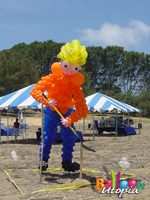 |
Balloon Utopia
Sandi Masori
619 339 8024
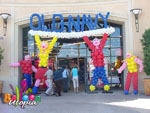 |
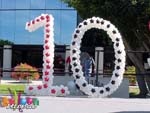
! |
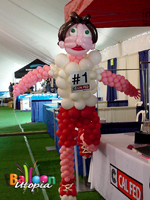 |

REFLECTIONS
What kind of dance accompanied The Song of the Sea? We have some interesting clues
By Sheila Orysiek
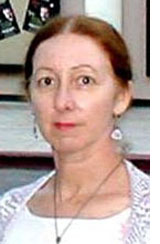 SAN DIEGO—At Torah Study during the week of Passover, we re-visited Exodus 15:1 to 15:27. This is the portion which describes the defeat of the pursuing Egyptians and Miriam initiating and leading the dancing and singing to celebrate having walked through the sea to safety. Included in this portion is The Song of the Sea or Miriam’s Song and I was asked to comment on what I thought of it from the point of view of a dancer. SAN DIEGO—At Torah Study during the week of Passover, we re-visited Exodus 15:1 to 15:27. This is the portion which describes the defeat of the pursuing Egyptians and Miriam initiating and leading the dancing and singing to celebrate having walked through the sea to safety. Included in this portion is The Song of the Sea or Miriam’s Song and I was asked to comment on what I thought of it from the point of view of a dancer.
In Dr. Richard Elliott Friedman’s “Commentary on the Torah” he notes that this is considered one of the oldest if not the oldest passage in the Bible. That it includes reference to dance doesn’t surprise me. Dance is thought to be the oldest of the art forms. Before music there was rhythm. Before using instruments people clapped, stamped, swayed - and that is dance. As a medium of expression, dance was used for many reasons which included instances when people sought to control their circumstances: weather, hunting, harvests, fertility, battle, etc. It was also used to celebrate and give thanks. We tend to think of dance as a female activity but most folk dance is male centric. Women were sometimes barred entirely from participating or considered ancillary or otherwise circumscribed. Men and women seldom dance together in folk dance and when they do, proximity and touch is limited.
The text mentions that Miriam and the other women had “drums” in their hands and one can easily see this as related to the tambourine. Percussion instruments - those that are struck - are probably among the most ancient in the inventory. A hollow tree log - while not portable - certainly can be used. In the category of “simple” instruments - in addition to those that are struck - are those that are shaken such as gourds. A tambourine can be shaken and struck and is portable. This portability enables it to be taken on a journey as well as used while dancing.
As for The Song of the Sea - I found it interesting that even so long ago the pattern is set - the same pattern we use today in constructing dance, story telling, a symphony or the arrangement of an evening’s program of entertainment. First is the “introduction” - setting the mood. In the first three verses The Song of the Sea introduces to Whom it will be sung, why it will be sung, then introduces the characters and what the singer intends to tell. One can hear this as a bright adagio/legato rhythm - an opening - a prelude - an overture - connecting - setting up what is to come.
 In the next several verses the pace increases as the story is told; gathering energy and momentum. Then comes the heart of the matter - the problem/contest. The tempo picks up and the staccato - drum beat - is conveyed in short declarative sentences: In the next several verses the pace increases as the story is told; gathering energy and momentum. Then comes the heart of the matter - the problem/contest. The tempo picks up and the staccato - drum beat - is conveyed in short declarative sentences:
I’ll pursue!
I’ll catch up!
I’ll divide spoil!
My soul will be sated!
I’ll unsheathe my sword!
This brings on the crescendo of the story - the intercession - the rescue - then the resolution. The music swells - we can hear it in the words. Next is thanksgiving for the rescue and praise for the Rescuer. Though the music has swelled, the pace now has slowed - no longer a drum beat - to allow time for the full recognition of what has happened. And finally the coda which is not a conclusion but takes us into a future time.
The Song ends with: YHWH will reign forever and ever!
Handel used this phrase to great effect in the Hallelujah Chorus of the Messiah.
When an artistic director of a ballet company plans an evening’s program of dance - whether storied or not - he/she will usually use this structure. Typically, the first portion of a three part program will be a “ballet blanc” - something in white (or reasonable facsimile thereof) which introduces the company and sets the mood. The second piece will be the heart of the matter; something the company especially wants the audience to see, and finally the last piece will be emotionally rousing, uplifting and/or sad; something to extend the mood - a lasting impression to remain with the observer after leaving the theater.
So this structure as seen in The Song of the Sea - opening (adagio/legato), introduction of the singer, story and characters, then a quickening of pace as one approaches the heart of the story, the denouement, the coda and a glimpse of the future - is exactly how a programmed ballet is constructed, whether storied or not. Not every ballet - not every opera - not every program - but most; usually those that become classics. Those which people want to see again and again even though they are familiar with the outcome.
Everyone knows what happens to Romeo and Juliet but people are still attending performances centuries after the ballet was written - the rhythm calls to us. We are creatures of rhythm. Some might say this is instilled in us en womb as we listened to our mother’s heartbeat; the introductory adagio of our life. Then this pace quickens, we are pushed along with increasing pressure, the dramatic entry into another part of our life story, a pause to consider and recover from what has happened and then off we go to meet our future.
What kind of dance did Miriam and the other women do? We cannot know, but we can speculate. Space determines movement; small space, small movement - large space, large movement. If they danced near a fire - they probably stayed within light of the fire. This often means a circular shape - dancing around the fire. It could also mean a line of dancers snaking around from fire to fire. Both circling and snaking provides a good way for impromptu dancers to keep in sight what the others - or the leader - are doing so they can follow.
Since the Israelite women were in all probability either wearing sandals or barefooted and dancing on a sandy soil - this eliminates multiple turns on one foot such as a pirouette. Modern dancers who dance in bare feet usually don’t go beyond one or two rotations when turning. Ballet dancers have done as many as twelve rotations, but they are wearing slippers on a smooth surface. A sandy soil would present too much friction to allow for multiple rotations and a sandal would as well. However, turns can be done using two feet - going from foot to foot as dervishes do. A sandy soil would also limit jumping as it has little bounce - anyone who has walked on a beach feels the legs soon tire as the sand absorbs energy rather than imparts it.
Clothes can also inhibit movement. If the women were in long robes/dresses with little pleating, gathering or bias - a fairly straight cut - this eliminates large leg movement such as kicking. So one can imagine them doing something more like a Hora rather than an arabesque. If the women were holding drums/tambourines - then they probably weren’t holding hands. The possession of tambourines might indicate that they had danced before this particular event; though of course tambourines can be used without dance.
If we assume that the women were not trained dancers, had not rehearsed, then the basic pattern of movement must have been simple. It probably included the swaying from side to side of the body and head, stepping to the side, back, front, a turn on two feet, the torso swooping up and down, shaking and hitting the tambourine and maybe chanting. Arms could sway to one side as the body moves to the other; or open up in front of the body, high over head or even used to tell the story of The Song of the Sea.

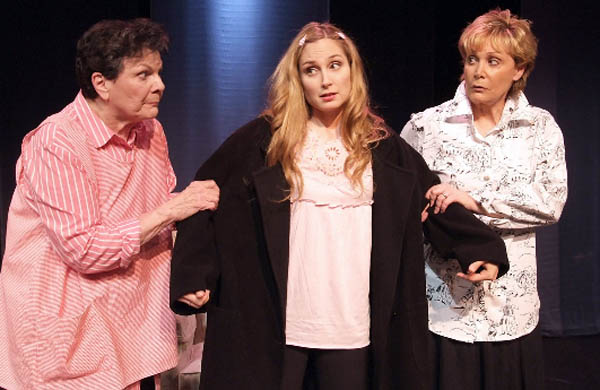
L.A. BEAT
From Door to Door is a Dor v' Dor story
By Cynthia Citron
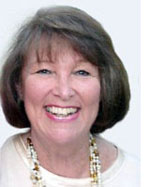 LOS ANGELES—Nobody enjoys a well-written, provocative, thoughtful play more than I. Especially if it has a solid, authentic cultural or ethnic component at its core. And if that ethnicity happens to be mine, all the better! LOS ANGELES—Nobody enjoys a well-written, provocative, thoughtful play more than I. Especially if it has a solid, authentic cultural or ethnic component at its core. And if that ethnicity happens to be mine, all the better!
With James Sherman’s From Door to Door, now having its west coast premiere at the Electric Lodge in the Venice district of Los Angeles, however, the principals, representing three generations of Jewish women, are so stereotypical that they seem to be caricatures as they incessantly explain themselves and their beliefs to one another. After two hours of banalities and cliches such as “Life is not a dress rehearsal!” you feel as if you’d been force-fed the Cliff’s Notes for Judaism 101.
This is not the fault of the actresses, who are uniformly outstanding, thanks to the capable direction of Howard Teichman. Nan Tepper is suitably kvetchy as the grandmother who fled the pogroms in Russia with diamonds sewed into the lining of her coat and who still anticipates the ominous knock on the door in the middle of the night. She is proud of the son who’s gone to college, but she denigrates the artistic ambitions of her daughter: “There are no girl artists!” she tells her, as she nags her to get married. “You get married and then you fall in love,” she says, and “It’s just as easy to fall in love with a rich man as a poor one.” And she offers her essential counsel on the proper role of women: “Girls should shine at night and disappear during the day.”
The daughter, Mary, played with charm and vigor by Cheryl David, obediently marries the first man who asks her. In those days girls often got married to get away from their overbearing mothers, but Mary brings her parents with her and spends the rest of her life catering to them, and to her husband, and her kids. Why isn’t she angry? Or resentful? Or just plain exhausted?
The third woman of the family is Mary’s daughter Deborah, a vivacious Robyn Cohen, who takes her mother to lunch to tell her that she is about to be married. To Richard, who is not Jewish. Which precipitates the best scene in the play as Mary responds hysterically to the thought of her daughter marrying a “shaygetz”. (Shaygetz is the male version of “shiksa,” a pejorative way of referring to a non-Jew. It is an expression of contempt and reveals the bigotry of that generation of Jews, which can only be an embarrassment to a more enlightened generation).
At any rate, Deborah shows a spark of rebellion as she argues with her mother about their family’s habitual indifference to religious observance and confronts her mother’s sudden and unexpected objections to a potential non-Jewish son-in-law. “If being Jewish was so important to you, why didn’t you MAKE me go to Sunday school?” she demands. It’s a powerful scene, and one which will resonate with many contemporary Jewish families.
Nevertheless, in the next scene Deborah is preparing for her wedding, inexplicably, to a nice Jewish boy named Ken. So much for rebellion.
It is difficult to figure out playwright Sherman’s intended audience for From Door to Door. If he is talking to a Jewish audience, they will not learn anything from this play that they don’t already know. And a non-Jewish audience can only be puzzled by unexplained references to “Yeshiva bochers”, mirrors being uncovered when “Shiva is over,” and the recording of a cantor singing Kaddish—twice! Also, do we really need Grandma Bessie singing that quaint old chestnut, “Oyfn Pripetchik?”
From Door to Door is set in Chicago and covers the years from 1936 to 1999, so periodically news from the outside world penetrates the cloistered world of this family. The Second World War, the GIs coming home, Jack Ruby killing Lee Harvey Oswald. Each event merits a brief comment or two, but they are discussed in a vacuum, as the family remains at a distance and untouched within their own self-centered cocoon.
And finally, I have to point out that set designer Jeff Rack was either strapped for time or for cash; his minimal set was tacky, lacking in imagination, and couldn’t have cost more than $1.98.
From Door to Door, a production of Electric Lodge in association with Theatre 40, will run Thursday, Friday, and Saturday at 8 p.m. and Saturday and Sunday at 2 through June lst. The Electric Lodge Theatre is located at 1416 Electric Avenue, in Venice.
Call (310) 823-0710 for reservations.


ADVENTURES IN SAN DIEGO JEWISH HISTORY
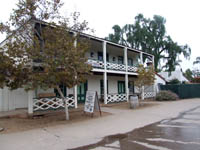
Robinson-Rose House
|
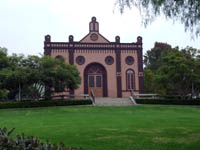
Old Temple Beth Israel |
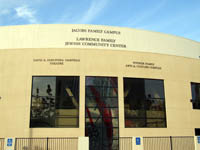
Lawrence Family JCC |
Editor's Note: We are reprinting news articles that the Southwestern Jewish Press ran in 1950. If you have historical topics about the San Diego Jewish community you would like us to explore, please e-mail your suggestions to editor Don Harrison at sdheritage@cox.net
Young People Organized for United Jewish Fund Drive
From Southwestern Jewish Press, March 28, 1950, page 1
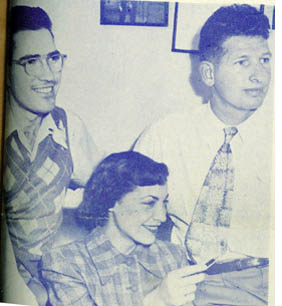 Jewish Young People of San Diego are on the march again for the United Jewish Fund 1950 “Keep the Miracle Alive” campaign. Jewish Young People of San Diego are on the march again for the United Jewish Fund 1950 “Keep the Miracle Alive” campaign.
Picked at an organizational meeting of young leaders, representatives of the youth organizations in the community, as well as State College, Richard Silberman, Mrs. Arthur Goldman, and Dave Anfanger accepted the chairmanship of the 1950 Young People’s Division.
Dick Silberman and Dave Anfanger are popular students at San DiegoState College, while Mrs. Goodman, the former Sonya Chenkin, is one of the leaders of the young married set in San Diego.
Joining with them, as members of their cabinet are, Norman Holtzman, State College student and former president of
Masada; Al Davidson, young leader of AZA, YPL and Hoover High School; Herbert Solomon, president of TYL, outstanding San Diego High School student and athlete, and Joan Steinman, student at State College.
When organized in 1947, the Young People raised close to $5,000 with Renee Perlmutter Cokin and Sally Stone as co-chairmen. More than $8,000 was secured in 1948 through the leadership of Dorothy Rabinowitz and Julius Garber. In 1949 approximately $6,000 was raised when Yale Naliboff and Mrs. Harold Lehrer ran the campaign.
Convinced that 1950 is the year in which to “Keep the Miracle Alive,” he Young People’s Division will conduct an all out drive, according to the chairmen, to have every young person from Sunday School age up, learn the story of the combined Jewish Appeal and become contributors to the drive.
Various events are being planned by the Campaign Committee including a Saturday night Dinner Dance, which will be held on April 22, for all young people. The committee urges that everyone save this date for one of the biggest affairs in San Diego’s history.
Support San Diego Jewish Soccer Club
From Southwestern Jewish Press, March 28, 1950, page 10
Do you know that in Europe, Asia, Africa, Australia, Israel and South America, the game of soccer is more popular than tennis, football, baseball or any other major sport? Do you know that soccer draws as many as 150,000 spectators o Cup games in Europe and South America?
Three soccer teams have already been developed in San Diego. One of these groups is the Hakoah J.C.C. Soccer Team. This club of fine young Jewish men has elected as its President, Zel Camiel and as Captain, Gerald Lazard. The other members of the team, many of them newcomers, are Alex Barach, Joe Baumgarten, Salvatore Paz, Jack Rosenbaum, Jack Sonabed, Mike Zachs, Gerald Lazard, Ivan Ilkovics, Philip Malek, Beny Levy, Levy Lipowski, Joe Schwartz, Abe Sonabend, George Schlesinger, Harold Stone.
Men and women and boys and girls of our community should be out at the games, cheering, when these boys are playing on Sunday afternoon at either Cabrillo Field, State College or Tiajuana. Those persons who would like to receive notifications of Soccer matches so that they might attend may do so by phoning Irwin Wohl at F-0171.
“Flash!!”
From Southwestern Jewish Press, April 14, 1950, page 1
At the two big gift dinners that were held before the campaign officially opened, a 16% increase over 1949 giving was shown.
Top gifts announced to date are: Max Rabinowitz, $5,000; Ratner Manufacturing Co, $7,500 from $6,000; Victor Schulman $3,500 from $3,000; Nathan F. Baranov, $3,000; Snyder Brothers $2.750 from $2,000; Murray D. Goodrich, $2,500 from $1,700; Ralph Hosenpud, $2,000 from $1,500; Harry Farb, $2,000; Edward Bland, $1,500; Jack Gross, $1,500; Rodin Horrow, $1,200 from $1,000; Elmer Glaser, $1,000 from $500; Carl Esenoff, $1,000; Leo Greenbaum, $1,000; Frank Winicki, $1,000; Arthur Gardner, $1,000.

SAN DIEGO JEWISH WORLD THE WEEK IN REVIEW
Donald H. Harrison in San Diego: Terror survivors hosted at Beth Am
Rabbi Baruch Lederman in San Diego: When it's not as plain as the writing
Dov Burt Levy in Salem, Massachusetts: 'Smitten Zionist' tells of Israel love affair
Rabbi Leonard Rosenthal in San Diego: 'Can you love your neighbor as yourself?'
Gary Rotto in San Diego: After several toe-dips, Block takes the dive
Adventures in San Diego Jewish History: What was the Jewish community news in 1950? Archives of the Southwestern Jewish Press provide some of it.
Shoshana Bryen in Washington, D.C.: Kuwait-Syria connection; Iraq's cell phones
Carol Davis in San Diego: Backyard's dumbed-down female show
Donald H. Harrison in San Diego: Students, survivors jointly commemorate Shoah at San Diego Jewish Academy
Lloyd Levy in Eilat, Israel: Holidays of despair, struggle and salvation
Sheila Orysiek in San Diego: Chapter Six in the serialization of her novel, Reluctant Martyr
Adventures in San Diego Jewish History: What was the Jewish community news in 1950? Archives of the Southwestern Jewish Press provide some of it.
Yvonne Greenberg in San Diego: Catholic university honors a rabbi for her career pursuing social justice, tikkun olam
Ulla Hadar in Kibbutz Ruchama, Israel—Sha'ar Hanegev aids SDJA's Shoah project
Donald H. Harrison in Poway, California: $11,500 reward offered for capture of vandals of Ner Tamid Synagogue's marker
Vicki Raun in La Jolla, California: 'God was in the boxcars'—Lou Dunst
Hal Wingard in San Diego: Three songs: "Kindness," "Ruth's Song" and "Bar Mitzvah"
Adventures in San Diego Jewish History: What was the Jewish community news in 1950? Archives of the Southwestern Jewish Press provide some of it.
Shoshana Bryen in Washington, D.C.: Could Mohammed ElBaredei have a bias?
Carol Davis in San Diego: Gaviota: hacienda tale in Porfirio's time
Donald H. Harrison in San Diego: Filner turns spotlight on veterans' suicides
Adventures in San Diego Jewish History: What was the Jewish community news in 1949? Archives of the Southwestern Jewish Press provide some of it.
Donald H. Harrison in San Diego: 'Dreamcoat': A cup for Judaism's candle
Rabbi Dow Marmur in Jerusalem: Shas leaders: so 'religious,' yet so corrupt
Lynne Thrope in San Diego: Liz Bartell ambiance, Paul Murphy cuisine are perfect mother's reward at Humphrey's
Adventures in San Diego Jewish History: What was the Jewish community news in 1949? Archives of the Southwestern Jewish Press provide some of it.
< BACK TO TOP
|
|
